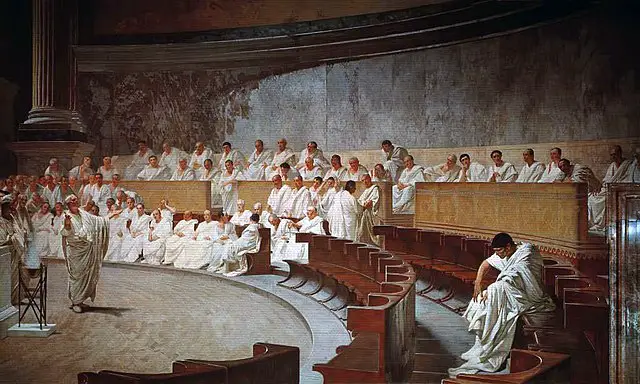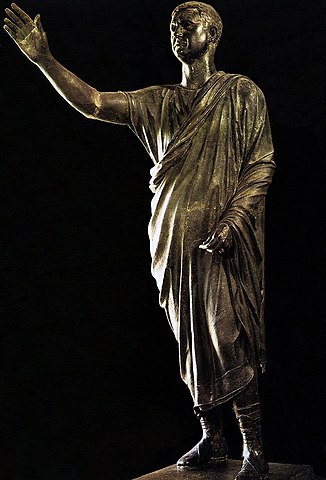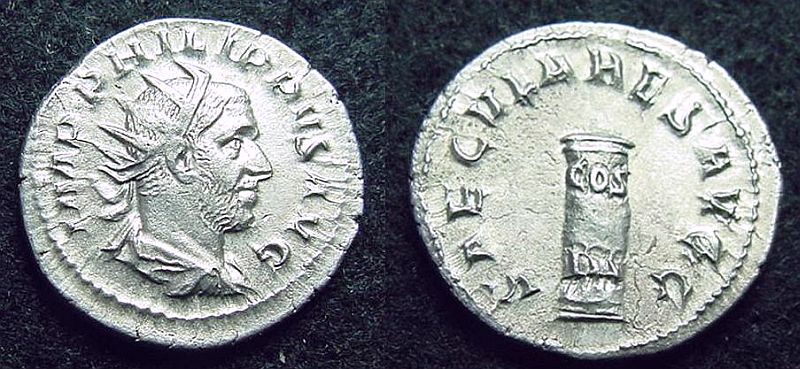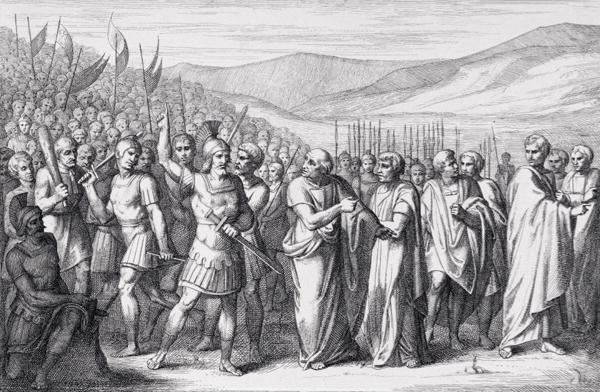
| Further Reading | The 5 Elements Which Defined The Early Roman Empire |
Nearly 2,000 years ago one of the world’s most advanced ancient civilizations lived. The late Roman Republic between the years of 133 BC and 27 BC built a government that had a series of checks and balances to prevent either the population of Rome or a rouge senator from seizing power over the respublica or the Republic.
The late Roman Republic had 3 factors that acted as a series of checks and balances on their government. First, every Roman citizen had a vote to elect politicians and change laws. Second, individual senators could only serve 1 year as the consul and had to be elected. Third, the Roman people elected a Tribune of the Plebs from among them that could override any law proposed by the Senate.
The modern governments of today all have checks and balances on the abuse of power. Most of these governments such as the United States have a checks and balance system that works between the branches of government. However, the checks and balances system of the Roman Republic was circular in nature between the people and the senate. While this system worked for a while it only took 3 ambitious senators who could convince the people to break the checks and balance system and cause the Republic to fall.
Here at The History Ace, I strive to answer hard history questions in easily approachable ways. If at the end of this article you enjoyed the content then feel free to subscribe to the free newsletter and share it around the web.
Without further ado, here is how the Roman Republic had a built-in series of checks and balances to prevent the abuse of power.
Every Roman Citizen Had A Vote And Could Impact The Republic

One of the first ways in which the Roman Republic had a series of built-in checks and balances was by giving the adult male population of Rome enfranchisement in the government. In theory, the average Roman could easily vote in or out any ambitious politician who sought to take over the Republic.
This was the start of the circular checks and balance system present in the Roman Republic. In theory, the political power of the late Roman Republic came from two sources, the people of Rome and the old wealthy senatorial families. This is why the legions of the late Roman Republic carried a banner bearing the acronym SPQR which stands for Senatus Populusque Romanus and translates to ‘on the authority of the Senate and People of Rome.
The Romans would vote on anything. If there was an invading army they would vote to fight it and defend the city. If a major decision was to be made the people would vote. Elections and oratory campaigning were popular things in the ancient city of Rome. The people would organize and be given a stone to cast their vote. They would line up in accordance to their societal rank with the elite going first and the plebs last.
The voting would last for hours and often was attended by more than 1,000 people. During the final years of the late Roman Republic, the city could not hold all of the voters and Julius Caesar had to build an entire fairground just to hold the estimated 10,000 voters.
However, since the people of Rome were easily swayed by the promises of politicians it became easier to control the voting population of the Republic. Towards the end of the Republic, the power of the Roman vote became so strong that popularis politicians were able to completely take over the Republic.
As such the first series of checks and balances in the government of the Roman Republic was built by the people of Rome themselves. The voting power of the people of Rome was in theory a check on any abuse of power by the Roman senate.
Individual Senators Could Only Serve 1 Year As Consul

Another check and balance on the abuse of power came from the office of consul in the Roman Republic. The consul was the highest elected office in the Roman Republic. In theory, the consul acted a lot like a modern president but was only elected to one year term. Roman consuls were elected to a one-year term. This prevented an extensive abuse of power and gave the consul limited time to enforce laws or change much about the Republic.
However, what is interesting about the position of consul was that Rome would elect two of them at the same time. Each consul would rule for one month and then switch off with the other consul. Further, each consul could veto any action made by the other consul. This created a checks and balance system in the highest office of Rome itself.
This checks and balance system became even better once you realized that in theory any person in Rome could be elected consul. Unlike the Roman senate, there was no barrier to becoming the consul of Rome. In practice, however, from the 4th century BC to the fall of the Roman Republic, there were only around 20 consuls who came from non-senatorial families.
The checks and balance system present in the Roman Republic was fascinating in itself. Even at the highest office, there were checks and balances in place to prevent the abuse of power. The highest office of consul came with a major check and balance on the power that prevented ambitious consuls from seizing power and becoming a dictator for life, in theory.
The Roman People Could Elect A Tribune Which Could Override Any Law

The final form of the checks and balances that existed in Rome was that the people of Rome could elect a Tribune of the Plebs who had the power to veto any law or call a vote. The Tribuneship was one of the most important offices in Rome and it was open to all people in Rome regardless of class.
In many ways, the Tribunes were the most powerful people in Rome for one reason. They could veto any law proposed by the Roman senate and veto the actions of the consuls. This was a major check and balance on any abuse of power in the Roman Republic. The idea was that these Tribunes represented the best wishes of the people and could stop any form of legislation from being passed that would negatively impact the people of Rome.
Further, the Tribunes were considered sacrosanct or unable to be interfered with or harmed in their duties by anybody in the city while in the city of Rome. In theory, the Tribunes were almost immune from any prosecution or law and were given nearly absolute reign over the legal procedures in the city.
A Tribune could also provide protection to another Roman. If a Tribune intervened on your behalf then nothing could happen to you in Rome until you were tried for whatever you were accused of doing. This created a vital safety net for the people of Rome and in theory, the office was designed to help the average Roman.
In reality, however, the office of the Tribune of the Plebs became another senatorial position that newer politicians strove to hold. Most Tribunes during the late Roman Republic were part of a political faction and would attempt to further their own political power and career instead of upholding their office.
Regardless, the last major check and balance in the Roman government was this office of the Tribune of the Plebs. This office gave an elected Roman nearly complete control over the political decisions of the late Roman Republic and would remain a valuable office for aspiring politicians to hold.
Conclusion
There you have it; an entire article going over how the Roman Republic had a series of built-in checks and balances.
The study of the government structure of the Roman Republic is fascinating. Even 2,000 years ago this civilization had managed to create an effective government that was built around a series of checks and balances. Even to this day, we know very little about how Rome functioned under the Republic period. Any potential graduate student of history will find substantial amounts of potential research to undertake here.
Here at The History Ace, I strive to publish the best history articles on the internet. If you enjoyed this article then consider subscribing to the free newsletter and sharing it around the web.
Further, you can check out some of the other articles below.
-
How The American Revolution Changed The World

Here is how the American Revolution changed the world. Many people are not aware of just how important this event actually was.
-
Why The Roman People Loved Chariot Racing

Why did the Roman people love chariot racing? Well it all comes down to these 3 reasons.
-
The Design and Color of Roman Chariots

What was the design and color of Roman Chariots? Were they faster or slower then normal chariots? Well here is everything!